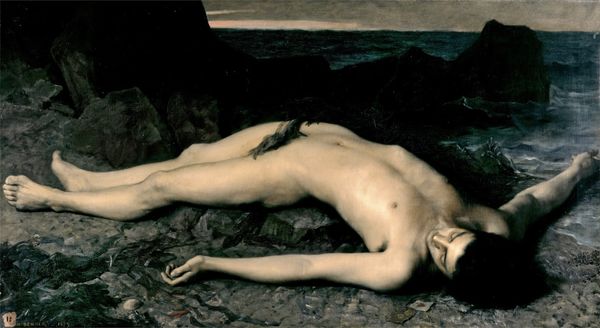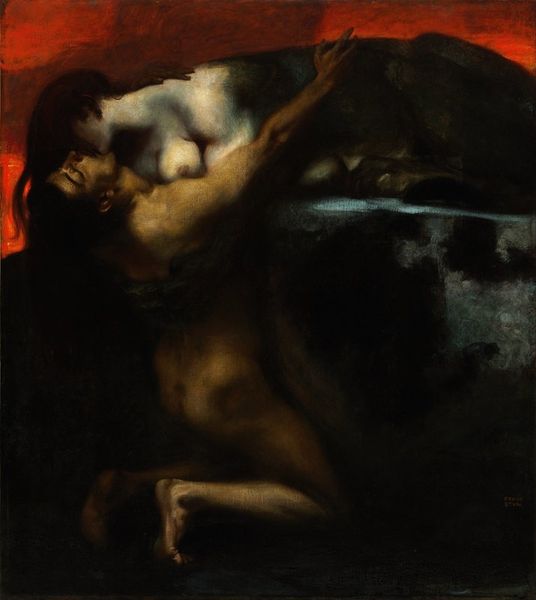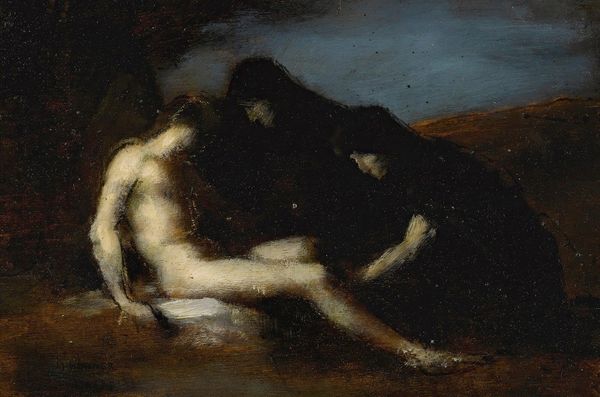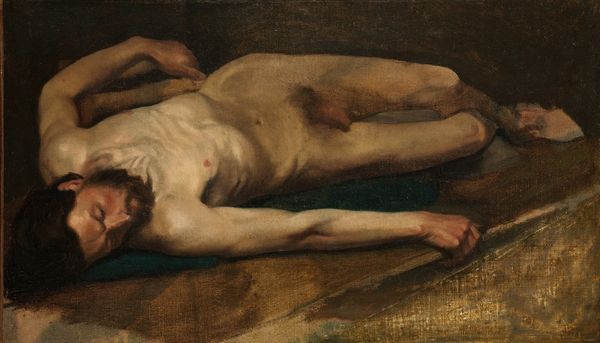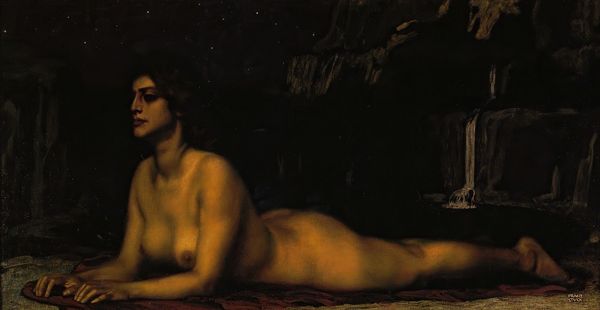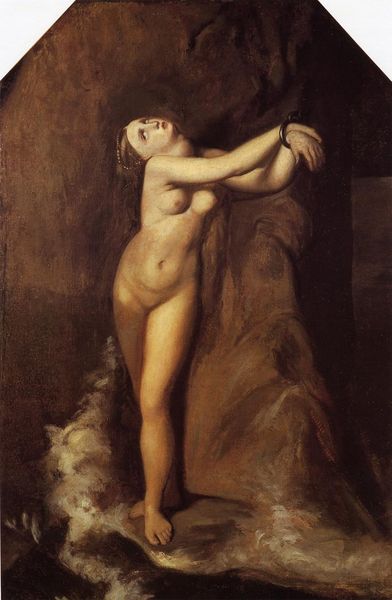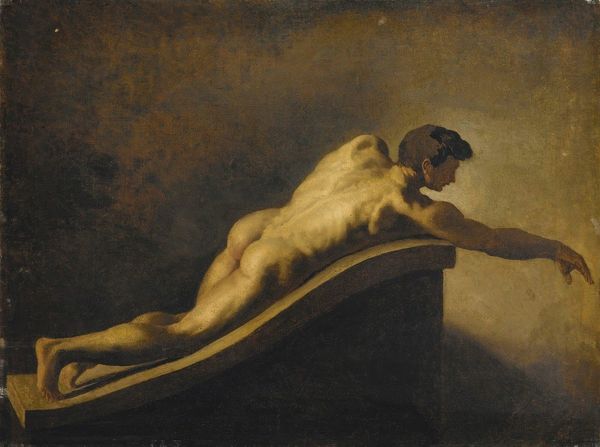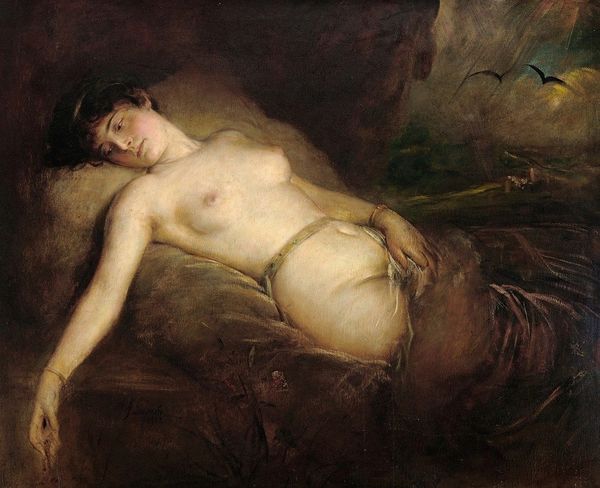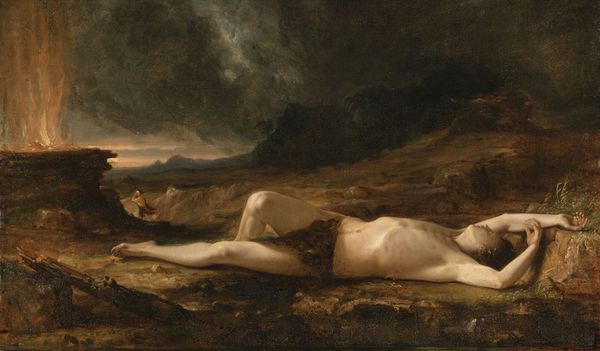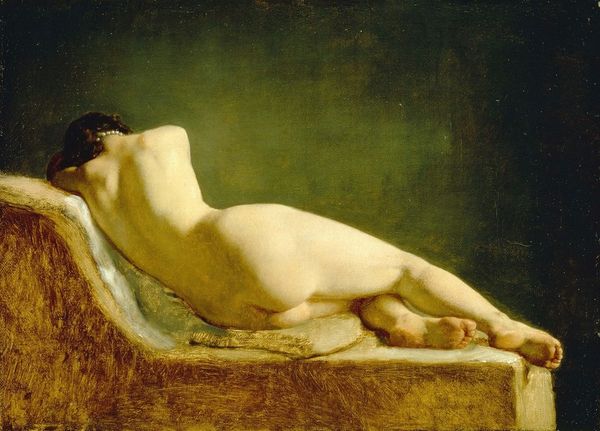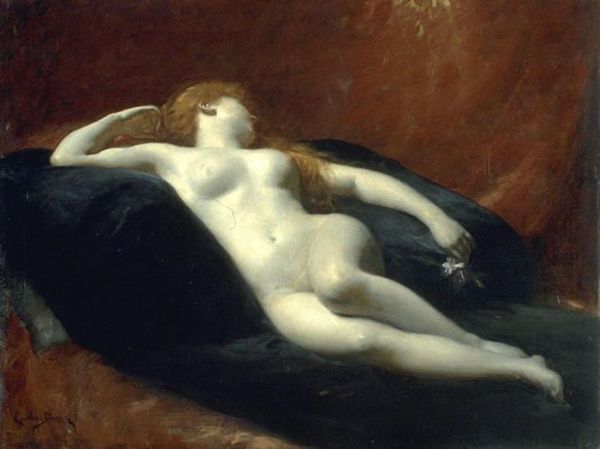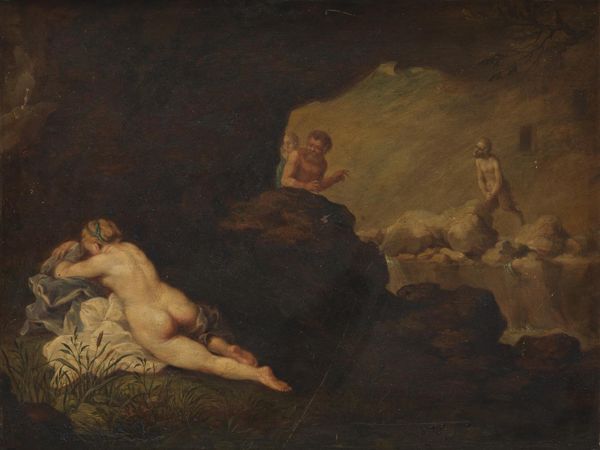
Copyright: Public Domain: Artvee
Curator: What a stark and unsettling composition. Editor: It certainly is. This is Jean-Jacques Henner's *The Levite of Ephraim and His Dead Wife*, painted around 1898 using oil paints. The narrative is intensely conveyed, isn't it? Curator: Intensely melodramatic, even. My eye is drawn immediately to the contrast between the paleness of the woman's body and the dark, almost impenetrable background. And, of course, the male figure hovering. Editor: Let's consider the cultural moment and Henner's artistic trajectory. He was working within an academic tradition, but engaging with Romantic themes of mortality and despair. His process involved layering dark pigments to build up the sombre, almost oppressive, atmosphere, further drawing focus to the body as a sight for contemplation, the subject as an object. Curator: So, for Henner, was it then a display of craft rather than a moment to encourage empathy for the female figure or questioning male power, particularly as museums served to solidify societal roles through such dramatic displays of women? Editor: I see your point. The social and institutional frameworks are crucial here. Works like these perpetuated certain ideas about women, their vulnerability, their objectification as inert figures to advance certain beliefs that reinforce unequal power structures in a given society. However, in a sense, you cannot separate his craft from its social meaning: what pigments were available, how his studio operated, who his patrons were--all these feed into this grim representation. Curator: Precisely. By exploring these connections and this period of production we are unearthing power structures from a new materialist and historical lens, not simply reinforcing them. Editor: Yes, perhaps, despite its problematic content, it provides a starting point for discussions on representation, power dynamics, and the socio-historical function of art in that day. Curator: Well, by emphasizing the context and how such artworks historically solidify inequitable power structures it helps one develop a more insightful critique and informed perspective to shape future exhibitions.
Comments
No comments
Be the first to comment and join the conversation on the ultimate creative platform.

